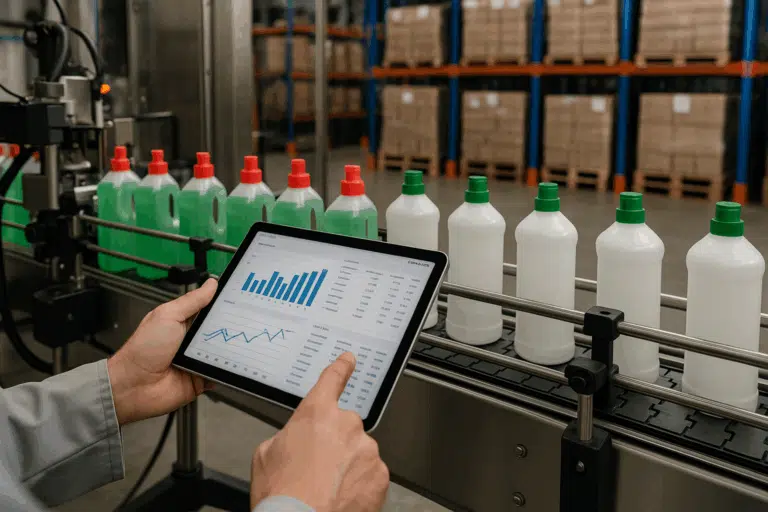Effective physical inventory counting methods are key to keeping inventory accurate and making stock audits smoother. In the complex world of inventory management, logistics solutions are vital. They help reduce errors and boost operational efficiency.
This article offers valuable insights and strategies for logistics managers and e-commerce professionals. By following best practices for physical inventory counting, businesses can make better decisions. This leads to success.
Table of Contents
ToggleIntroduction: Importance of Physical Inventory Counting
Physical inventory counting is key to a business’s success. It’s important for keeping operations running smoothly. When stock counts are accurate, it helps with financial reports and keeps customers happy.
But, if there are mistakes in stock counts, it can cause problems. Businesses might end up with too much or too little stock. This can mess up the supply chain and cost a lot of money.
Using good counting methods helps businesses keep the right products in stock. By focusing on accurate counts, companies avoid expensive mistakes. This makes inventory management better and helps with making important decisions.
Having accurate counts is crucial for a reliable supply chain. It combines detailed procedures with up-to-date data.
Physical Inventory Counting Methods: Which One is Right for Your Business?
Keeping track of inventory is essential for any business that sells products. Accurate inventory data helps prevent stockouts, reduce losses, and improve financial planning. There are several methods to count inventory, and choosing the right one depends on your business size, industry, and operational needs.
Main Inventory Counting Methods
1. Complete Inventory Counting
Also known as full inventory counting, this method involves counting every item in stock at once. It is often done at the end of a financial period to ensure records are correct.
Pros:
- Provides a complete overview of inventory.
- Helps identify major discrepancies.
Cons:
- Time-consuming and labor-intensive.
- May require business operations to pause.
2. Cycle Counting
Cycle counting is a more flexible approach where inventory is counted in small sections on a regular basis. Businesses often prioritize high-value or frequently sold items for more frequent checks.
Pros:
- Less disruption to daily operations.
- Helps maintain consistent inventory accuracy.
- Identifies errors and trends over time.
Cons:
- Requires ongoing commitment and structured planning.
- May not detect all discrepancies if some items are rarely counted.
3. Sampling Inventory Counting
This method estimates total inventory by counting a small sample of stock rather than the entire warehouse. The results are then used to project the total inventory count.
Pros:
- Saves time and labor.
- Ideal for large warehouses with thousands of items.
Cons:
- Less accurate than full counts.
- Errors in the sample can lead to incorrect inventory estimates.
Physical Inventory Counting Methods: Key Strategies for Success
Effective inventory counting strategies are key for successful inventory management. Using methods like scheduled counting and categorizing inventory by turnover rates helps a lot. For example, regular stock audits keep data up-to-date and encourage team accountability.
Having a set counting schedule reduces errors and keeps stock levels accurate. Using stock auditing techniques gives businesses better insights. This leads to smarter decisions on supplies and restocking. These steps are essential for a good inventory management system that meets customer needs and operational demands.
Essential Tips for Avoiding Errors
To reduce errors in physical inventory counting, focus on training and using advanced tools. These steps can make inventory counts more reliable.
Training Your Team Effectively
Good training for inventory counting is key. It makes sure team members know how to count and their roles. Hands-on training helps them get used to the process and technology.
Keeping training up to date is also important. It keeps everyone current with new systems and practices. This boosts accuracy and efficiency.
Utilizing Technology for Accurate Counts
Using technology in inventory counting makes it more accurate and cuts down on mistakes. Tools like barcode scanners and inventory software make counting easier. They allow for quick data entry and tracking.
These tools offer important accuracy tips for counting. They help make inventories more precise. This builds trust in the accuracy of inventory data.
Benefits of an Efficient Inventory Count
An efficient inventory count offers many benefits for businesses. It helps manage stock better, reducing the chance of having too much or too little stock. This ensures products are ready when customers need them, boosting customer happiness.
By making inventory processes smoother, businesses can cut down on costs. They save on labor and improve accuracy, reducing losses from mistakes. This efficient counting saves time and boosts productivity, helping businesses stay profitable in the long run.
The advantages of efficient counting also help in making smart decisions about buying and selling products. With accurate data, businesses can adjust their stock to match what customers want. This ability to quickly adapt to market changes helps businesses stay competitive and agile.
Common Mistakes in Physical Inventory Counting
In the world of physical inventory counting, it’s key to know common mistakes. Spotting these errors helps logistics managers avoid problems. Two big mistakes are not preparing well before counting and not following the same counting steps every time.
Neglecting Pre-count Preparations
Good pre-count preparations are the foundation of accurate inventory counting. If areas are messy and items aren’t labeled well, things can get out of hand. This mess leads to confusion and more chances of making mistakes.
By organizing products and labeling them clearly, you can make counting more accurate. This step is crucial for a smooth inventory process.
Inconsistent Counting Procedures
Being consistent in counting is important for reliable inventory records. Using different methods can cause problems and make data less trustworthy. Also, if staff isn’t well-trained, they might not know the right steps.
Setting up standard counting methods and training everyone well is key. This ensures accurate counts and helps maintain trust in inventory records.
Conclusion
Effective physical inventory counting is key to accurate and efficient management. Learning different counting methods helps reduce errors and improve stock control. This is vital for smooth operations.
A well-organized approach to inventory management boosts a company’s productivity and decision-making. It’s important for businesses to maintain reliable stock levels and accountability. By using the techniques discussed, companies can avoid common mistakes in inventory counts.
CPCON provides specialized solutions to make inventory counting more efficient and accurate, reducing errors and optimizing asset management. With advanced technology and proven expertise, we help your company improve inventory control and ensure smoother, more strategic operations.
Get in touch with us and discover how we can transform your inventory management!
FAQ
What are the most common physical inventory counting methods?
The top methods are Cycle Counting and Complete Inventory Counting. Cycle counting checks a small part of the inventory often. Complete counting checks everything at once, usually at the end of the year for financial reports.
How can technology aid in physical inventory counting?
Tools like barcode scanners and inventory software make counting more accurate. They cut down on mistakes, make counting faster, and let you track inventory in real-time. This boosts your team’s work efficiency.
What strategies can I implement to avoid errors in inventory counting?
To avoid mistakes, schedule counts and keep items labeled well. Train your team well. Regular checks and sorting items by how often they’re used also help.
Why is it important to prepare before conducting a physical inventory count?
Good preparation is key for a smooth count. Without it, you might get confused and make mistakes. Being ready helps manage your stock better and ensures accurate audits.
What are some common mistakes to avoid during physical inventory counts?
Don’t skip getting ready, use the same counting steps, and train your team well. Fixing these problems early helps get accurate inventory data and keeps your records trustworthy.
How can I improve my team’s training on inventory counting methods?
Better training means workshops, clear roles, and hands-on practice. Using real examples helps your team learn and remember best practices better.
What are the benefits of an efficient physical inventory count?
A well-run count means better stock control, lower costs, and happier customers. It also helps make quick decisions for buying and selling, giving you an edge over competitors.





























